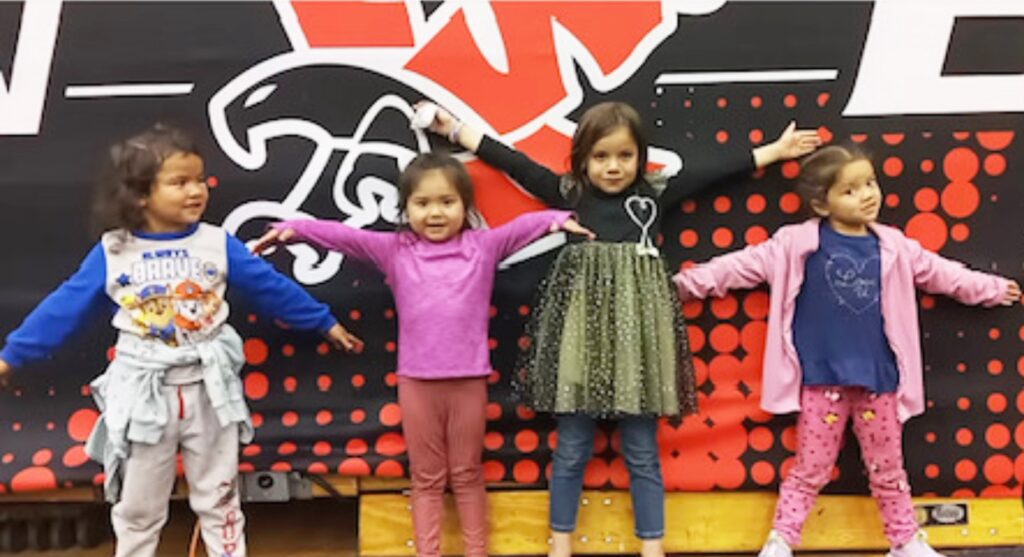Spirit Of The Eagle Powwow
The Spirit Of The Eagle
The Spirit of the Eagle Powwow is Eastern Washington University’s annual powwow and is put on by the Native American Student Association and the American Indian Studies.
Thanks to the hard work of the Native American Student Association the Spirit of The Eagle Powwow returns again with fervor and excitement!
Featuring Head Man George Meninick JR and Head Woman Taunie Cullooyah and the legendary drum group Bad Canyon!
2024
Happening June 1st! Starting at 1pm. See following for agenda and details.
Head Staff
MC: Alec Bluff
Arena Director: Algin Scabbyrobe
Head Man: Trevor Jim
Head Woman: Marisa McKissen-Kaulaity
Host Drum: Lightning Creek

Powwow Agenda
Men’s Traditional Special Sponsored by Alec Bluff
Jingle Dress Special in honor of outgoing royalty, Sponsored by Tahlia Broncheau Little Miss (7-12)
Jingle Dress Special in honor of outgoing royalty, Sponsored by Miss Taylena Bigsmoke (13+)
Hand Drum Special Sponsored by NASA club
Sponsored dances are dances that are funded by a single dancer or dancers family and are done to highlight that specific style of dancing.
These competitions are exciting and are very important to Powwows.
The Spirit of The Eagle Powwow and the many events put on by NASA and the American Indian Studies wouldn’t be possible without the hard work and diligence of our Native students. To thank them for going above and beyond we will be sharing a speech and giving thanks to students.
Different dances have specific regalia that correspond with them! So while certain dancers may dance multiple categories their regalia has specific meaning tied to a certain dance. Here is some info on the dances and the regalia connected to them!
Men’s Grass Dance:
Men’s Grass Dancers wear strands of yarn or ribbon that hang from their regalia to represent grass in the spirit world. The dance is meant to mimic the flowing movement of the prairie grasses. The story of the Grass dance comes from a young man who had one hindered foot and wanted to dance. He decided to create a dance that mimics the flow and bend of the grasses of the prairie.
Men’s Fancy Dance:
The Men’s Fancy Feather dance is the most active dancing style. The regalia for Fancy Dance is brightly colored and has double bustles on the back and arms. This style encourages friendly competition between the singers and dancers and often the singers will perform trick songs with sudden stops to throw off the dancers! This makes Fancy Dance a very popular and exciting competition.
Men’s Traditional Dance:
Traditional is a slower and respectful style of dance and is meant to reflect the stories of warriors returning from battle or hunting.
Northern – The Northern style of regalia features bustles of long feathers (which are often from an eagle) that burst from the waist.
Southern Straight – The Southern style of regalia often features cotton, buckskin, a shirt, and a breastplate of bone.
Traditional dancers also wear a roach, or a combed headdress made of deer tail hair or porcupine guard hair.
Men’s Prairie Chicken Dance:
The Prairie Chicken dance is meant to mimic the mating dance of the prairie chicken. Sometimes considered a historical predecessor to Fancy dance, the Prairie chicken dance is flamboyant and meant to imitate the strut of a rooster. The regalia of the Prairie Chicken dancers is often very colorful with bustles on the shoulders.
Men’s Grass Dance:
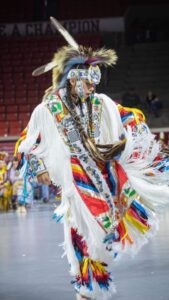
Men’s Fancy Dance:
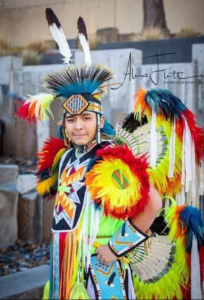
Men’s Traditional Dance:
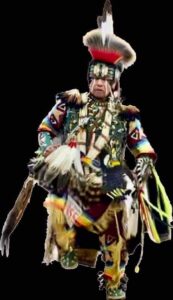
Men’s Prairie Chicken Dance:

Women’s Fancy Shawl:
Fancy Shawl Regalia features delicately beaded capes or yokes, moccasins and leggings with long fringed shawls. The outfits are danced in twirling motions and are a very graceful dance. The fancy dance requires intricate footwork in response to the beat and tone of the music.
Women’s Jingle Dress Dance:
The jingle dress features seven rows of jingle cones. The cones are made of various metal materials. Some dresses utilize other noise making materials such as bones or hooves. Many dresses are decorated with ribbon and matching beadwork. Eagle feathers and plumes are worn in the hair. Dancers carry a fan that is raised during the honor beats of the song.
Women’s Traditional Dance:
The women’s traditional dance is a slow bouncing step that requires dipping and swaying to the beat of the drum. Commonly the dresses are made of buckskin and decorated with beading, bone, quillwork, or shells. The colors are often more reserved than other regalia.
Women’s Fancy Shawl Dance:

Women’s Jingle Dress Dance:
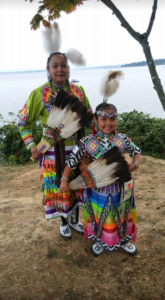
Women’s Traditional Dance:
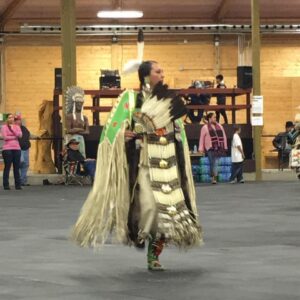
During the day, the Admissions teams is available to give tours of campus.
Listen out for announcements regarding times for the tour.
11:00am: Dancer Registration Opens, Pre-registered drums check in. Royalty Sign-ups Open.
1:00pm Grand Entry, Opening Prayer before Flags Posted, Welcoming From Evanlene Melting Tallow EWU advisor, Welcoming from War Bear, Nasa President, Welcoming from Venessa Pete, NASA Vice-President, EWU Powwow Chairperson
1:30pm: 5 Intertribals, Excuse all adults (Except Golden Age), END OF ROYALTY SIGNUP
2:00pm: Jingle Dress Special in honor of outgoing royalty, Sponsored by Tahlia Broncheau Little Miss (Ages 7-12).
2:30pm: Tiny Tots
3pm: Golden Age Women Contest (55+), Golden Age Men Contest (55+)
3:30pm: Women’s Traditional Special, Sponsored by Evanlene Melting Tallow
4pm: Jr. Girl’s Categories, Jr. Boy’s Categories, Teen Girl Categories, Teen Boy Categories
4:45 pm: Dance contest & Speaking contest for royalty for Little Miss & Miss Spirit of the Eagle Jr,
5pm: Dinner Break
6pm: One Man Hand Drum Contest
6:30pm: Honor the Graduates
7pm: Grand Entry
Invocation/Prayer, Welcoming from Evanlene Melting Tallow, Venessa Pete, and War Bear, Honor Powwow committee
Intertribals
7:30 pm: Honor the Athletes with Levi Horn.
8pm: Crowning of the new Little Miss & Miss Spirit of the Eagle Powwow. Como Hee Honor Song for new royalty done by host drum Lightning Creek.
8:30 pm: Tiny Tots
8:45pm: Jingle Dress Special, in honor of the outgoing royalty Taylena Bigsmoke. Sponsored by Taylena Bigsmoke & Family. (Ages 13 & Up)
9:00pm: War Bear’s Blessing of War Bonnett and coming out ceremony
9:30pm: Men’s Traditional Special, Sponsored by Alec & Karyn Bluff.
10:00pm: Adult Women Categories
10:30pm: Adult Men’s Categories
10:45pm: Trevor Jim & Marisa McKissen-Kaulaity Sweetheart Special
11:30pm: Announcing of Winners
Powwow Etiquette
These include the Grand Entry, Flag Songs, Veteran’s Songs or any other song that the emcee designates and during these songs, men should remove their hats.
It is best to look to others in the crowd and follow along.
The outfits worn by dancers are called regalia (not costumes) and are handcrafted and cherished by the dancers.
Do not touch regalia as they are very expensive and are heirlooms to the dancers and their family.
When the Master of Ceremonies announces Intertribal and invites people down to the dance floor feel free to join and dance!
Be sure to dance in a respectful manner that is in line with Powwow dancing. Watch how other dancers dance during Intertribal to know how to follow along.
Please ask dancers, craft persons, and other before taking pictures.
If they are willing for pictures to be taken it is respectful to offer to forward the pictures to them through phone number or email.
Please respect the privacy of everyone attending the Powwow and do not disturb others experience.
For some tribes, pointing with your finger is considered very rude.
If you must indicate something nod in the direction you wish to indicate.
This is straightforward and taken very seriously.
No drugs or alcohol are allowed at Powwows under any circumstances.
While the Spirit of The Eagle powwow is open and encourages that the public attends, Powwows are important cultural events for Native Americans and for newcomers there is some etiquette we encourage you to know and understand.
Keep in mind you are a guest and that if you are respectful you will be well received.
